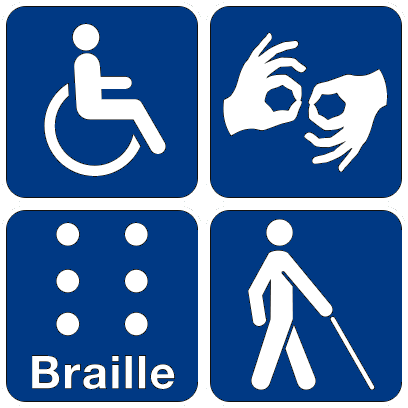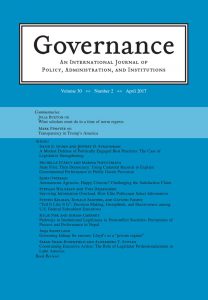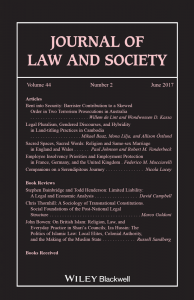Guest Post: Disability Accommodations
This is a guest post by Jenny Dick-Mosher. Jenny is a doctoral candidate at Virginia Tech studying Sociology, Health, and Women’s and Gender Studies. Jenny just recently accepted a position as a disability rights advocate at the Disability Law Center of Virginia.
Sociology Lens News Editor Megan Nanney (mnanney) saw Jenny present on this topic at a departmental symposium and felt that this important information should be shared with those looking to teach courses and for general knowledge in daily life. Thank you, Jenny, for sharing!
Being a self-identified disabled feminist in academia means a lot of people come to me for advice in how to make their disability accommodation statements on their syllabi. For many, the accommodation statement can be as awkward and perplexing for the non-disabled as it can be to interact with disabled people in real life. I’ve had countless interactions with non- disabled people who perform linguistic gymnastics to avoid the word disability and seem to be unclear about how or if to address the crippled elephant in the room.
We sociologists can thank Goffman for pointing out the stigma associated with disability in our culture, a stigma that still makes people uncomfortable and unsure about how to deal with the mandatory disability accommodation section of the syllabus. There is no easy answer to this because people with disabilities can approach disability differently from one another. Some of us find pride in this identity, while others would prefer not to be identified as disabled outside of requests for accommodations. Therefore, one always runs the risk of including some while excluding others through your terminology. To those that still struggle with the disability accommodations statement, I would make three suggestions.
- Draft Your Own Statement
First, draft your own disability statement to show your students that you are truly interested in inclusivity and working with the students for their success in the classroom. Start by thinking about what you want to name your statement. Many people tend to avoid using the phrase “disability” in the statement and opt instead for terms like “Accommodations Statement”, or “Statement of Inclusivity” students who don’t like to identify as disabled will respond well to that. Personally, my title is “Disability Accommodations.” I understand that many students do not feel comfortable with the disability label but I like to include a brief history lesson about the disability rights movement in my statement to show them that these accommodations were brought about through activism. I also remind them of the laws which protect them: Section 504 of the Rehabilitation Act; the Americans with Disabilities Act; and in my state, the Virginians with Disabilities Act.
- Design the Statement to Aid Your Students, and Focus On Accessibility Rather Than Just Accommodation
Second, think about what your own commitment to their accommodations will be. You can just do what is necessary vis a vis the Disability office or you can make yourself a resource to them. How will you phrase this statement? I follow the social model of disability which means that disabilities are caused by an unaccommodating society rather than individual impairments. Therefore, my statement says this, “Please contact me to discuss options if the design of this course produces barriers to full and meaningful participation.” Another approach is, “If you have a disability please contact me to discuss accommodations.” Just try not to state that the disability itself is the barrier because this type of language can be stigmatizing. Make sure that you give them the information for the disability services offices on campus so that they can get the documentation that they need. Also, it is up to you whether you want to accommodate students individually with or without documentation . My school’s disability services office told me that they discourage instructors from giving accommodations without documentation. Therefore, I do not necessarily design my courses around accommodation, but rather accessibility. I try to make my courses it as accessible as possible and adjust it as needed. It is an entirely different approach. Check to see if your school offers courses for faculty on accessible course design. Or look here for accessibility guidelines http://www.aph.org/research/lpguide.htm.
- The Statement Itself Should Introduce the Reader to Disability
Third, use the disability statement to teach your students about the wide range of disabilities that are out there. I find that many students with psychiatric disabilities such as, anxiety and depression do not realize that they qualify for accommodations. You might want to mention that on the syllabus and point them in the direction of your school’s disability services office. You also might want to say something like, “not all disabilities are visible.” Also, try to avoid the phrase “special needs” aside from being cringe worthy, a person with special needs is not a protected minority group but a person with a disability is. Many people use person first language like, “person with a disability” or “students with disabilities.” And although I prefer identity first language (disabled person) to describe myself, I think that your students will respond best to person first language.
Conclusion:
The bottom line here is to be thoughtful about your accommodation statement and make it your own. This shows students that you do not just teach about equality and justice but that you are committed to these values in your teaching practices. Disability rights are civil rights and that gets lost sometimes when we discuss accommodations. Too often, people approach accommodations by asking “do I have to…” If we want a just world, we will stop viewing accessibility and accommodations as something we have to do but rather something we do because it’s right.




1467-7660/asset/DECH_right.gif?v=1&s=a8dee74c7ae152de95ab4f33ecaa1a00526b2bd2)
